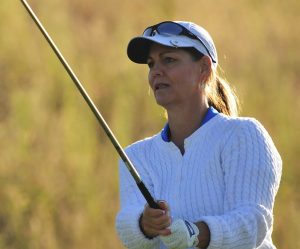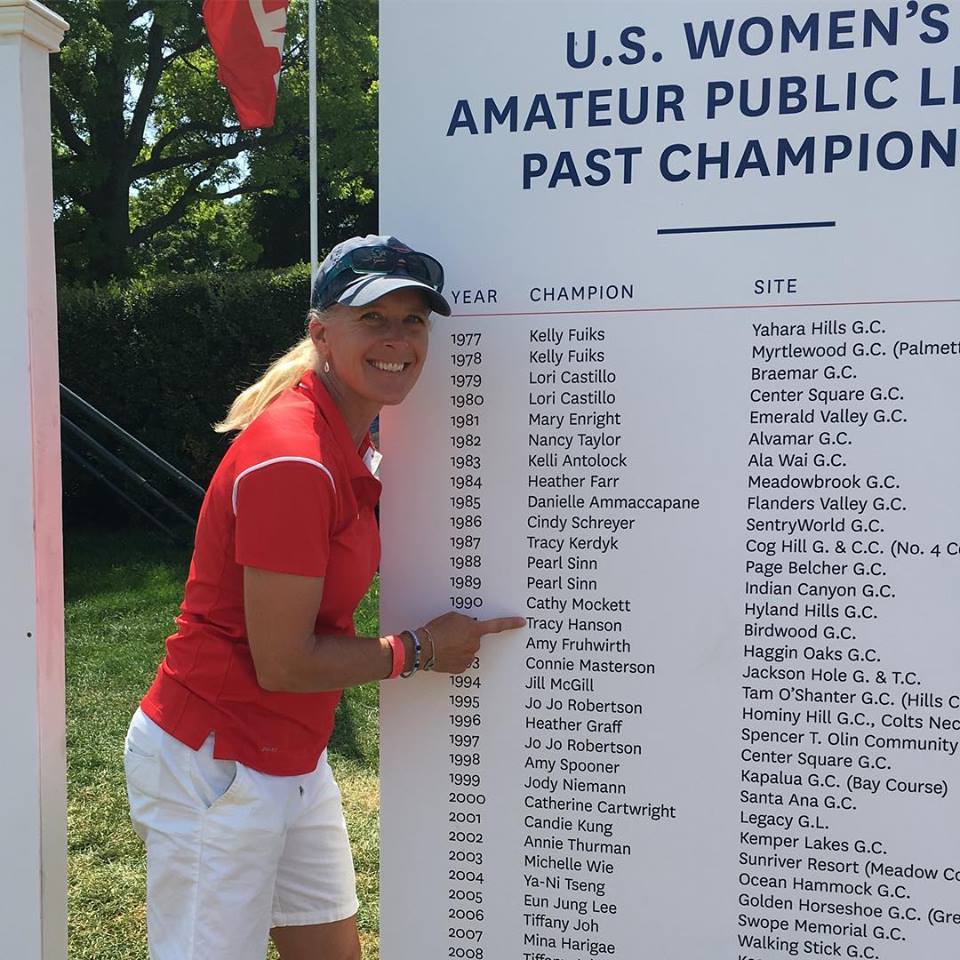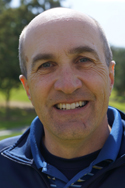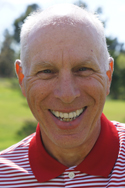Tracy Hanson, a 15-year LPGA Tour veteran and consultant for women’s ministries with Links Players, is at the historic Chicago Golf Club for the inaugural US Senior Women’s Open, which starts today. She is caddying for old friend Barb Bunkowsky (pictured), and she brings us her insights into the tournament as it opens.
Let’s talk about Barb a little bit. What is your friendship going back with her?
We played just a couple years on Tour, my first couple years, with each other. Met her through the fellowship and then kind of got to know her a little bit on and off the golf course. She left the Tour because she got married and had a child.
We have maintained an off-and-on friendship over the time and distance, and over the last seven years we have been able to rekindle that friendship and have gotten to spend more time personally with each other.
How did she qualify to get in?
She qualified through a local qualifier. I think it was in Daytona at one of the LPGA courses. I think she shot 75 to get in.
So, is this a tournament you are hoping to play in yourself one of these days?
Well, I have four years (before turning 50) to mentally prepare myself for the tournament, because the jury is still out on me. Being the inaugural one, the first one, it would have been really fun to be able to play. But because I don’t have a lot of playing time under my belt over the last eight years, I think about it and feel nervous.
The more I have walked into the week, the more excited I have gotten with just the fact that I can be here, caddie for a friend, and to be a part of this historic event with so many players that I have played with.
How physically up to it do you feel?
I am totally fine physically. Beside my normal workout regime—you know, running and hiking and biking—I carried my bag at least once beforehand and played several rounds walking. I even went on a few walks with a weighted backpack on, just to feel weight on my shoulders..
Oh good.
And the bottle of Ibuprofen is sitting on the desk (laughs).
The golf course looks fantastic. Is it?
Yeah. It is more of a links style where the trees don’t really come into play, but it does have that longer fescue grass that can come into play.
Right.
The bunkers are definitely positioned to come into play. Not all of them are an issue, but they are there so that you can see them. And then there are a few that depend on which tee boxes they end up playing. There are five holes where there are two options for tee boxes. Many bunkers will come into play depending on the tee box.
It definitely feels like an old golf course—you know, a little bit back and forth, kind of more compact, no homes around it.
The greens are massive and a lot of them have a square shape. There are a lot of false fronts, so it’s going to be the challenge because if you can’t get it over the false front, the greens have a lot of curve and then these square points, so you might run out of green and then down into a deep bunker. They are pretty undulated, too.
So does the golf course favor a certain type of player?
Any golf course usually favors a long hitter, but I think it is going to favor the player that can hit it high and control the quadrants where they can play their balls. There is a little bit even with the false fronts. We’ve been talking about it today that if you can, it’s probably the better area to miss the green short and use like a rescue club up the hill to the green versus over the green and chipping back, which is typically downhill or a sidehill. The greens are running I think 12 to 12-1/2 (on the Stimpmeter).
So on paper, this looks like Juli Inkster’s tournament to win, or are there others who can contend with her?
I would say that Juli is definitely a favorite, probably one of the top three favorites, because she has just been playing and competing and she is a long hitter, and so she is probably one of the ones in the best in competitive shape. But I also think Trish Johnson, who won the LPGA Senior Championship last year, could be in the hunt or other players like Laurie Rinker or other players that have just never stopped playing.
Um, who else? Laura Davies is here. You know, you can never count Laura Davies out.
And Liselotte Neumann?
Yep, Liselotte is here and she’s got her long-time caddie with her. Juli has her long-time caddie with her.
So those are probably some of the favorites, for sure.
When you say the course favors a long hitter or Juli is a long hitter, what is a long hitter among the senior players right now?
Um, I would think that Juli is still hitting it longer than I am, so she is probably out there like 260-265.
Are there any dark horses to watch out for?
You’ve got some girls who are physically in really good shape, and so for longevity of walking four days in a row plus the practice rounds, at the end of the weekend if they can keep their ball in play, they are going to have the stamina.
Hiromi Kobayashi is here from Japan. I don’t know how much she is playing, but there are a couple other Japanese players here. So you’ve got players that have experience and I think all the ones that have stayed in the golf business have a better chance, because they have been just around golf, playing golf and thinking golf.
And I don’t know a lot about the amateur players, but there are some good amateur players here. I wouldn’t count out an amateur player giving it a run.
Anything else we should know before we watch?
The USGA has really done a good job of showcasing the history of women in golf.
JoAnne Carner is going to hit the first shot. Hollis Stacy is second. And you’ve got the 1962 US Open winner, Murle Lindstrom Breer.
On a personal note, it has been fun because I haven’t been at a USGA event in, I don’t know, over 10 years. They have all of the boards of past champions of all the amateur events and Opens, so they have a board for all the US Amateur Public Links Championships, and I found my name on the board (photo below)!
(Chicago Golf Club Photo: USGA gallery – Fred Vuich)



